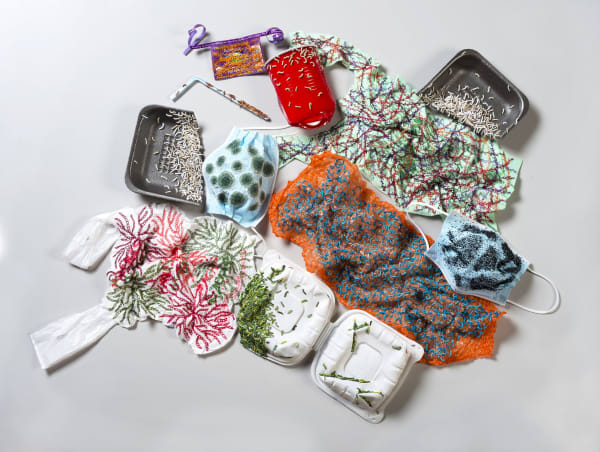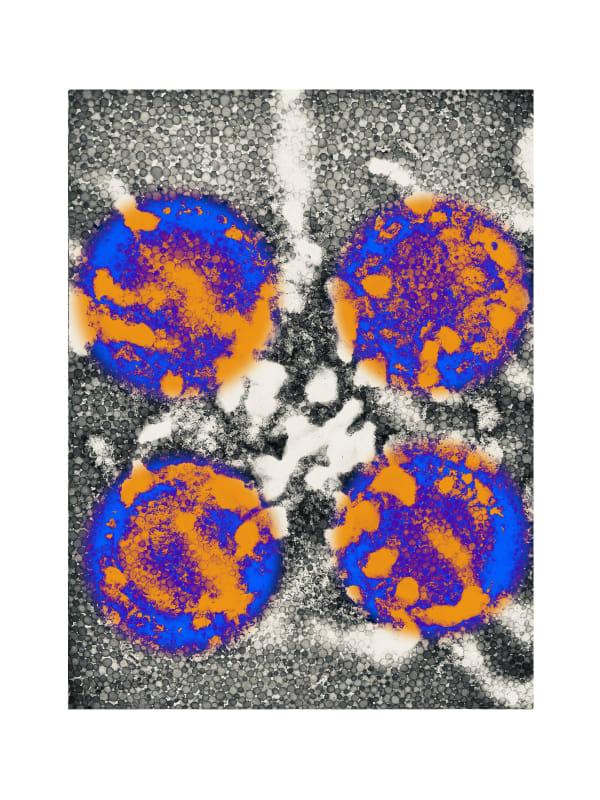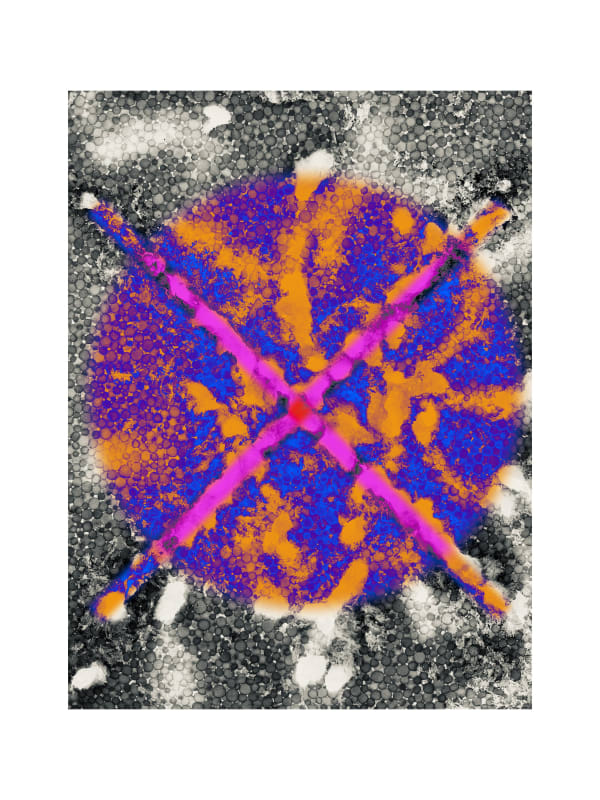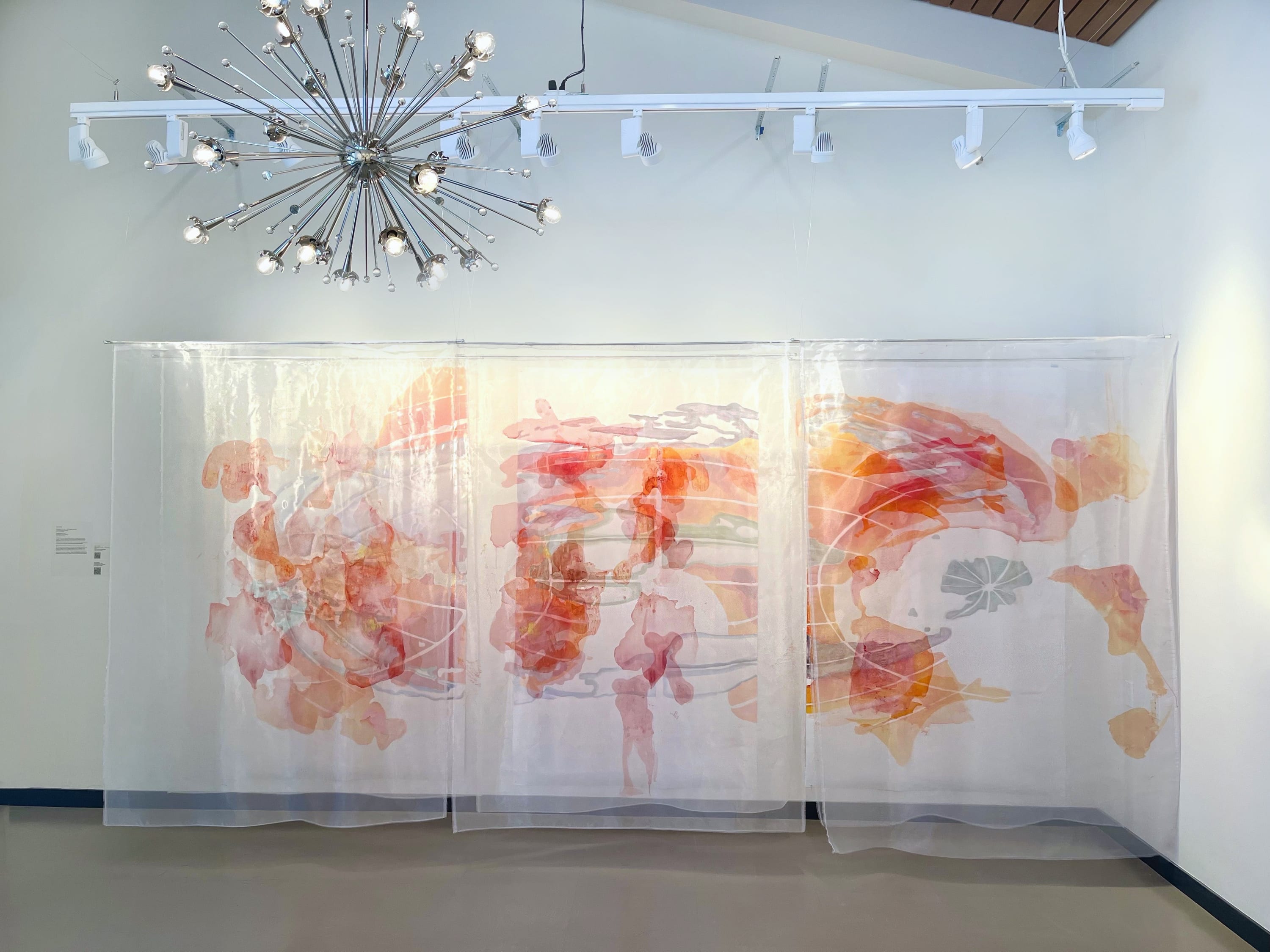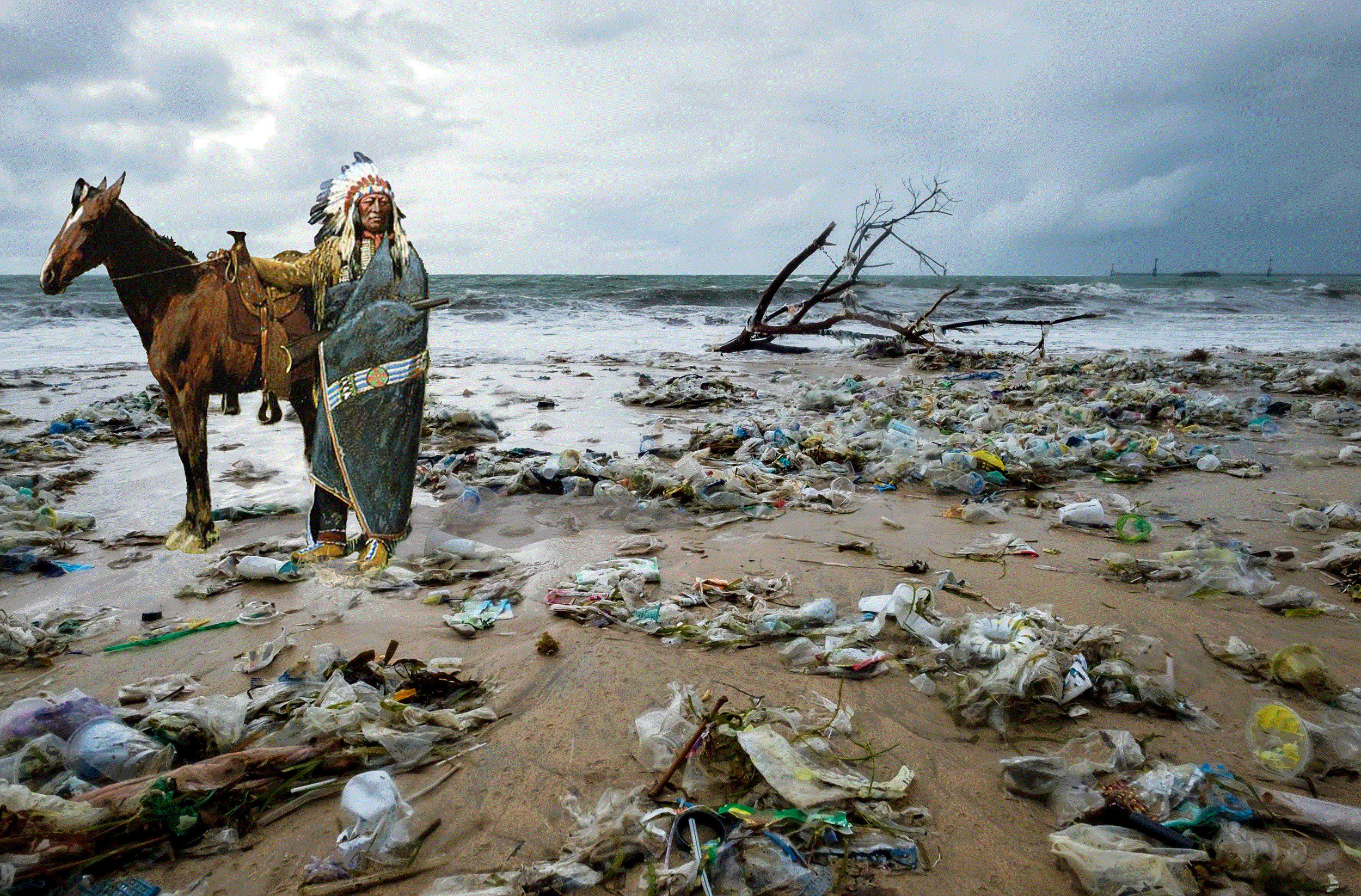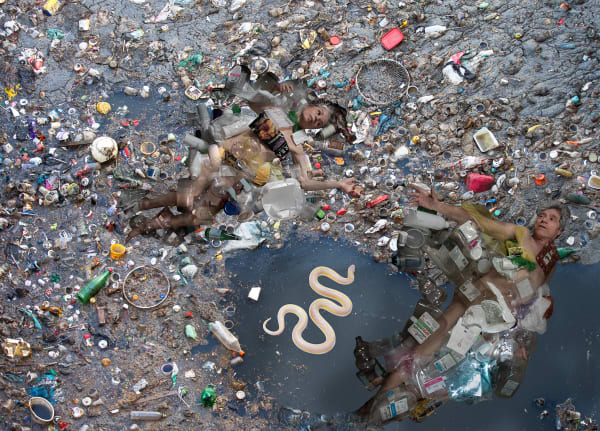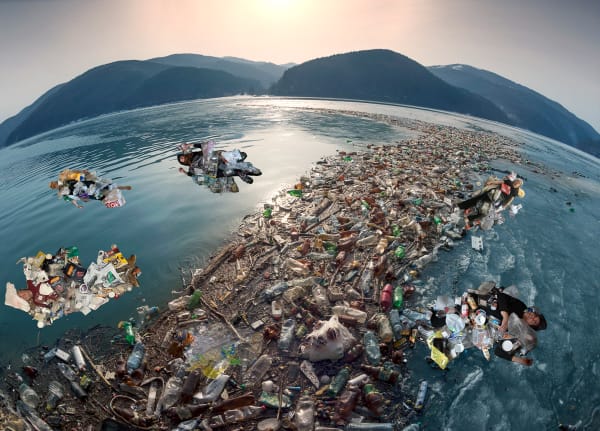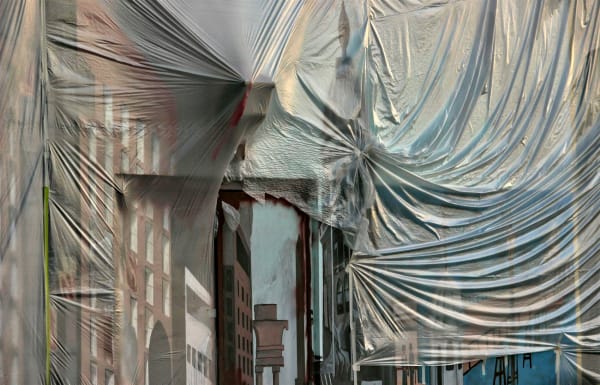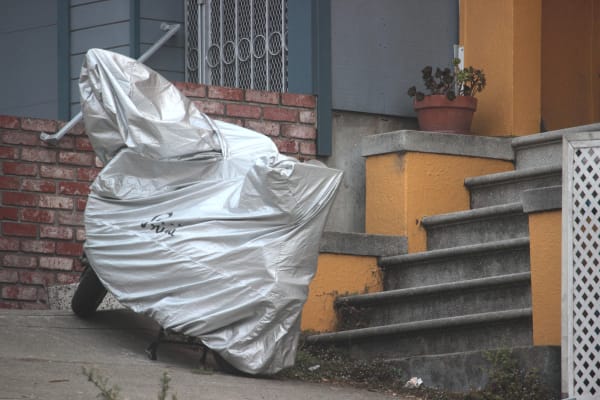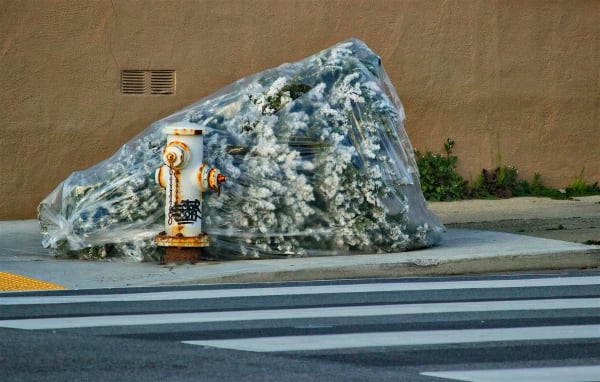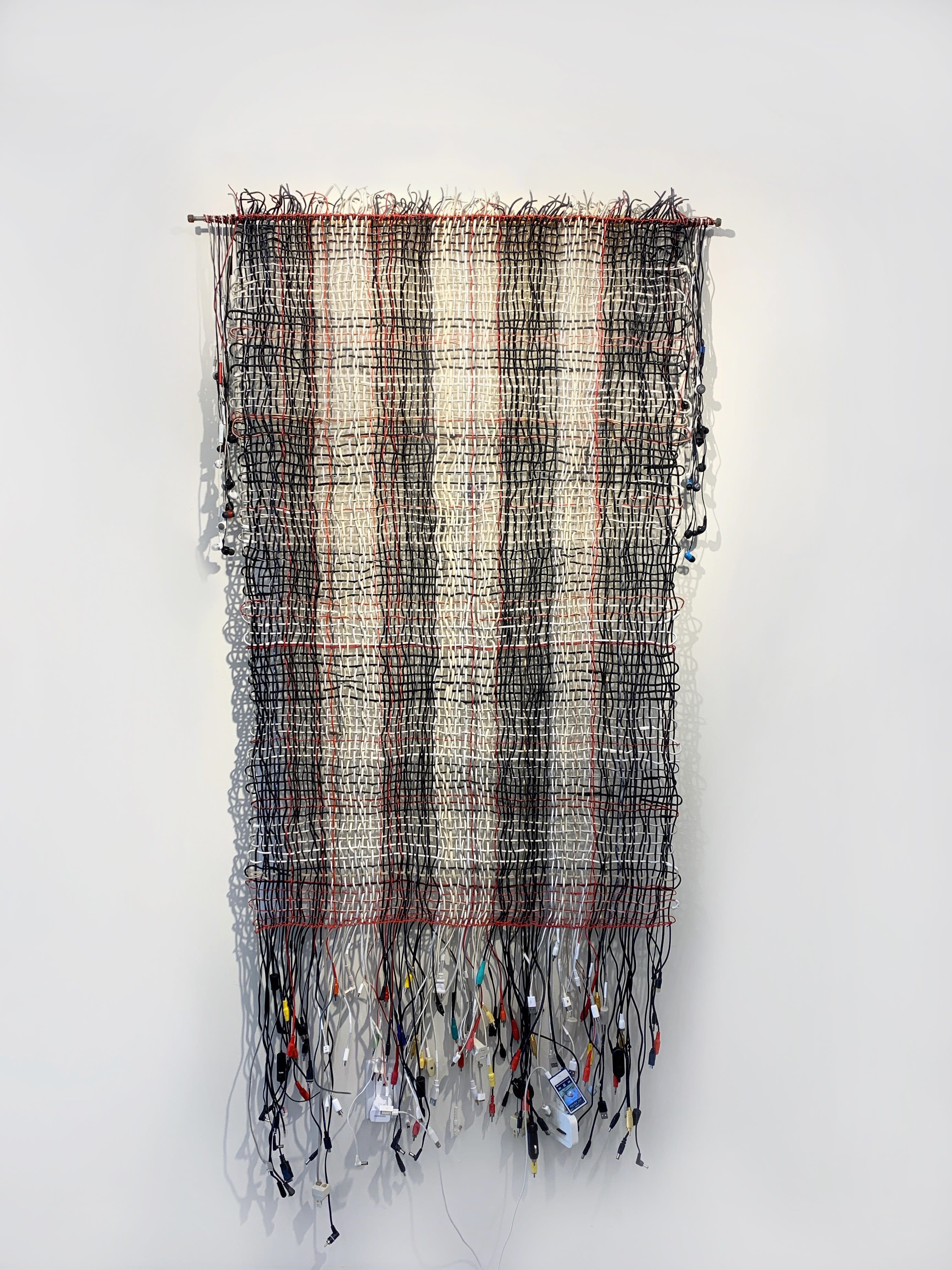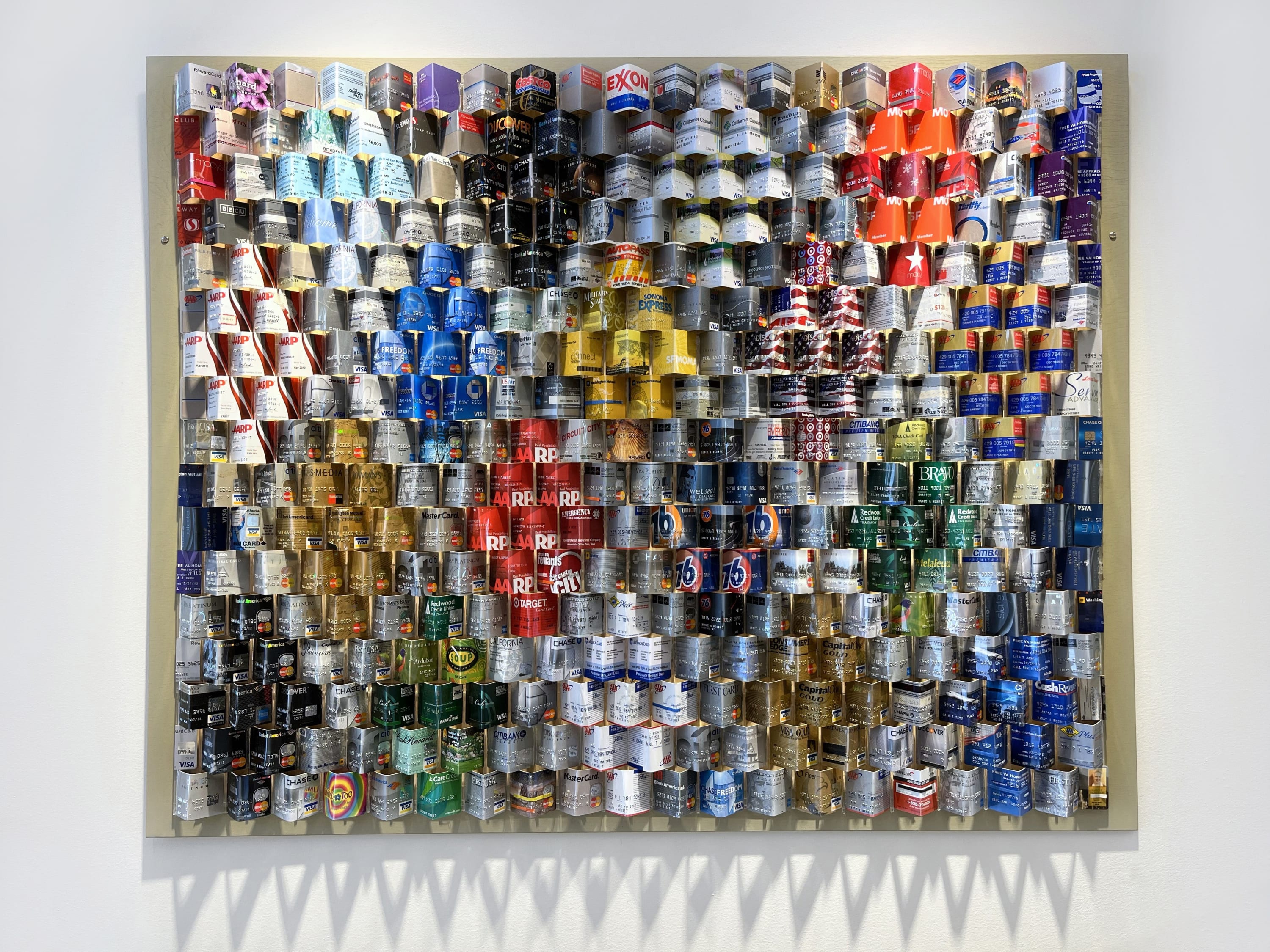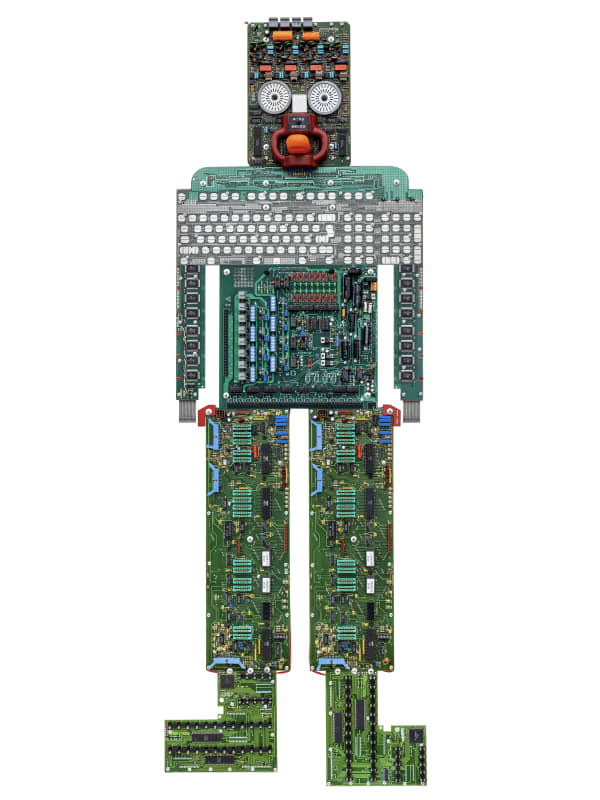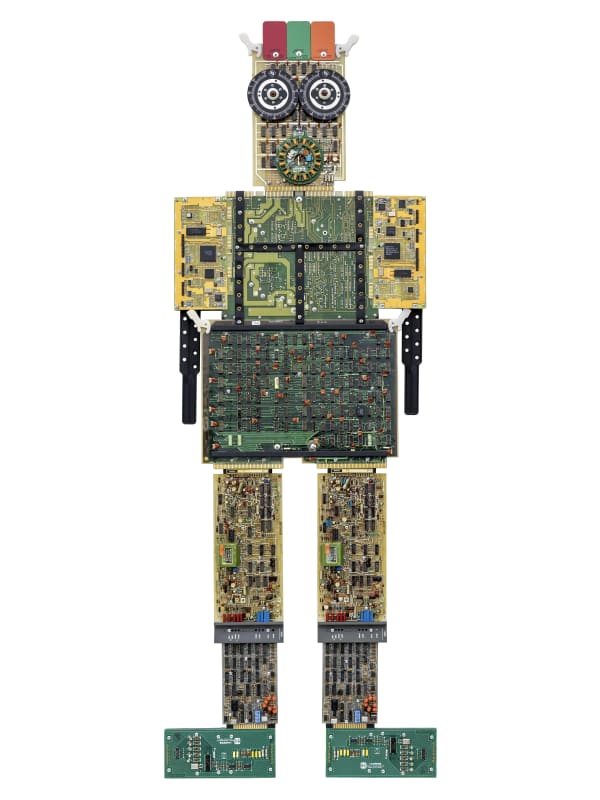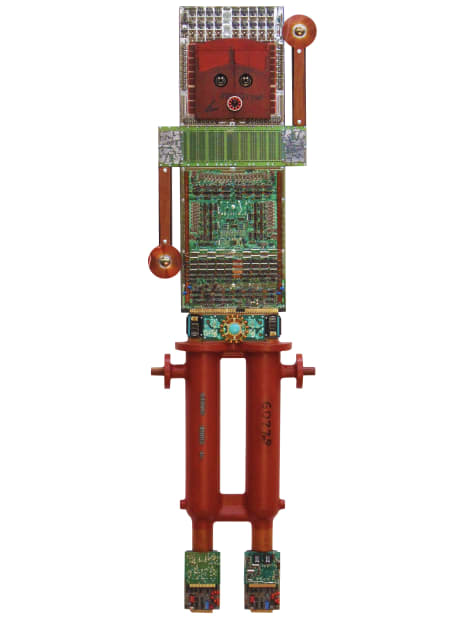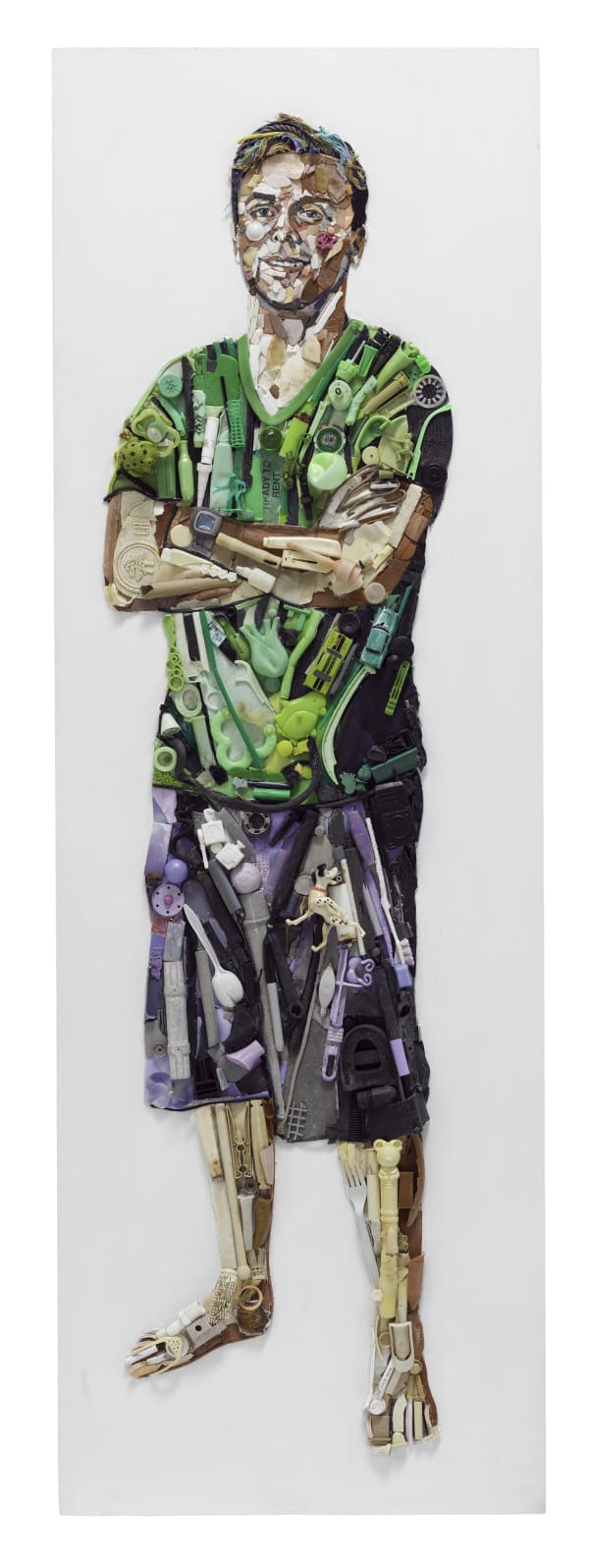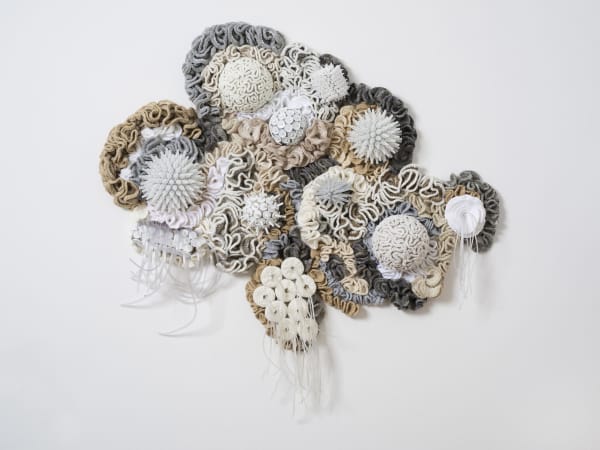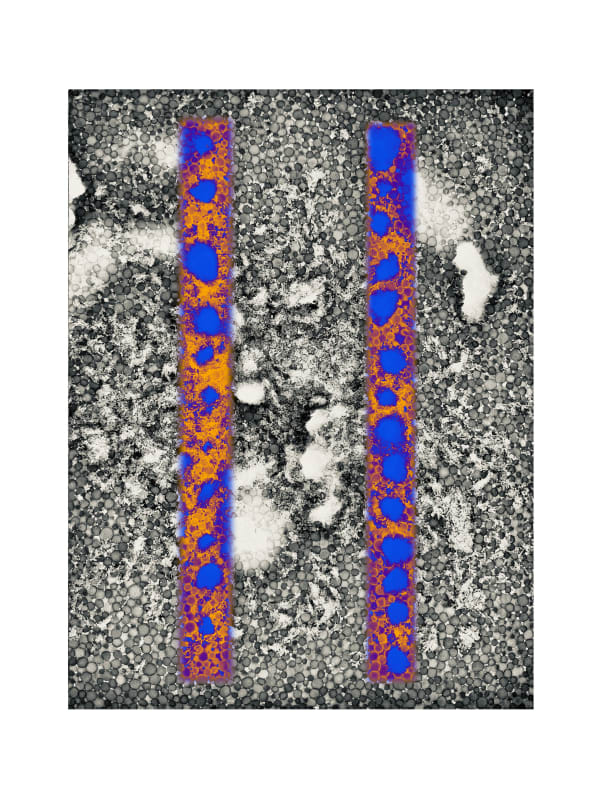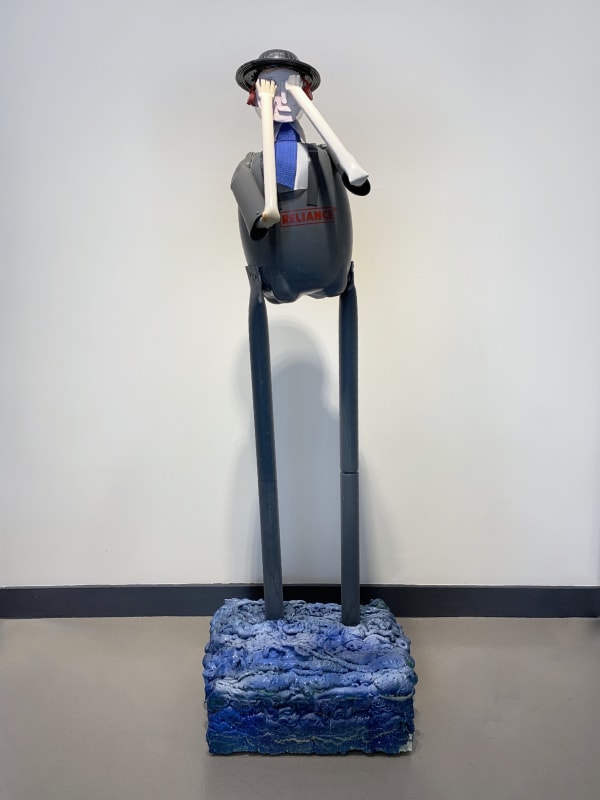-

-
a world free of plastic imagined
What will it take?A World Free of Plastic Imagined exhibition aims to call attention to and expand our understanding of the issue of plastic pollution through the lens of Bay Area artists and inspire each of us to consider how we can all engage on this increasingly critical issue to secure the wellbeing of our planet.
In a contemporary culture of consumption, the negative consequences of the excessive use of plastic are real and harmful to the environment and our health. The numbers are staggering: plastic waste into the ocean from the fishing industry is estimated at 150,000 tons each year; our current water consumption practices generate one million plastic bottles each minute around the world, while only 9% of those are being recycled; current research predicts that by 2050 plastic volume in our oceans will outweigh the amount of fish by nearly three times. If the current pattern is to continue, it would have damaging effects on our ecosystems and threaten the stability of ocean life. Imagine if we could reverse and change this pattern.
The exhibition brings together twelve artists working in photography, painting, mixed media, and installation to offer a provocative look at the environmental impact we each have on out planet. The result is an impactful visual narrative that aims to raise awareness and serve as a reminder that small individual changes can bring about major and necessary change.
Hanna Regev
Guest CuratorLISTEN TO THE AUDIO DESCRIPTION of complete curatorial statement →
-
Future is Inclusive and Accessible
Artwork Descriptions
Each artwork in this viewing room is accompanied by a visual description. In some cases, additional detail images are included to offer a closer look at the artist's technique. Please click on individual artwork images to access this information.
Audio Descriptions
Each artwork in this viewing room is accompanied audio artwork descriptions available through "Audio Description" links in each artist section. Explore a complete playlist of audio descriptions here →Additional Resources
Full ExhibitionThe viewing room presents a selection of artwork featured in the exhibition. Full exhibition is on view at RT gallery from June 9 to August 26, 2022.Art & Activism Series
This exhibition is a part of our Art & Activism series. Explore recent exhibitions Climate Change: The Ticking Time Bomb and Building Bridges: Breaking Barries here.

“For Bleached, stylized coral reef structures are interspersed with plastic medical waste that has passed through my hands over the past nine years.
As a former medical professional and more recently as someone with a chronic medical disease, I have witnessed first-hand the large amount of plastic waste that is generated in caring for patients. I have been saving all kinds of plastic medical waste- needle caps, needle sheaths, vial caps, oxygen tubing- that have passed through my hands knowing these items would find their way into my artwork about the environment."- Ruth Tabancay
"I abhor plastic waste and work hard to eliminate it, but these plastics have been essential in maintaining my health. The knowledge that plastics like these contribute to the destruction of the coral reefs creates a conflict with my belief system."
"My work illustrates my hope that living forms will evolve to digest plastic. As a former bacteriology major, I have long had images of microorganisms embedded into my subconscious. In daily life, the continuous flow of plastic through my home made it hard for me to ignore it as an art material.
The intersection of these two ideas has resulted in my embroidery on various plastics — plastic bags, plastic cups, face masks, vegetable tags, straws, and takeout food containers — with forms resembling bacteria, fungi, and larvae or maggots."Curatorial comment
On display in this exhibition are works of artists and scientists who are committed to raise awareness of the plastic overconsumption and mismanagement of plastic waste. All works are crafted from found plastic debris, demonstrating the utility of reclaiming plastic as an art material, while highlighting the artists’ perspectives and personal relationship with plastic.
Here, Ruth Tabancay addresses the mass bleaching of coral reefs, “the rainforests of the sea” that serve as a home to one-quarter of all marine life, protect our shorelines from storms and erosion, and provide food and jobs coastal communities. Today, coral reefs worldwide are under threat from stressors including climate change, carbon emissions, and plastic pollution.
"The mission of the Entomology Department and the Insect Museum at the University of Costa Rica is to study the life of insects and their relationship to the environment. One of our most recent studies is based on scientific discoveries spearheaded by Stanford University. The study finds the common mealworm possesses an appetite for styrofoam as well as a digestive enzyme capable of breaking it down into biodegradable particles. This presents an opportunity to consider solutions to our global plastic problem and to think critically about our own appetite for this material."
- Federico Paniagua Rodriguez, Biologist
Entomology Department, University of Costa Rica

Michal Gavish is a multimedia artist and former research scientist with a PhD in chemistry. Her fascination with science goes back to her research work, observing the beauty of the microscopic world that is hidden from the naked eye. For her, plastics are not just materials to use and discard, they are long-chain molecules made of thousands of identical, repeating units that twist and entangle at the nanoscale. Captivated by these knotted polymeric systems, she follows their intricate entanglements.
Gavish develops her three-dimensional works by using acrylic paint that she mixes in her own original chemical combinations. The resulting large format gives a layered abstracted view that begins with an angled painting of the clean world in the background layer. The translucent fabrics on top add to the image layers describing the entangled plastic formations as they expand globally. The plastic coverage imagery partially blocks the view of the background layer.
The map is based on current scientific data and extends into the future and into the potential of an imaginary solution of the communal scientific effort for peeling these layers off the world.

"This series shows conceptually what happens to the single-use plastics that pass through our lives. Maybe the most common experience is that we buy something packaged in plastic. We throw that plastic in the recycle bin and either we don't give it another thought or we think it will be recycled into something useful and it will not have a negative impact on the environment.
The truth is that only about 5-6% of those plastics are actually recycled. Much of it turns up in the ocean where it breaks down into microplastics that last for at least hundreds of years and are already being found in the organs and tissues of many living creatures on earth, including humans."
- Tanya Knoop"Pollution in the ocean compromises ocean health, causes harm to sea animals, and contributes to global climate change. My motivation for this series is to help raise awareness about the plastic pollution problem threatening the health of the planet and all living things."
DeWitt Cheng’s photographs primarily focus on the aesthetics of form in a cityscape undergoing transformation. The future is unknown. Our choices will determine if we will live in a biodegradable world or if the plastics will be lodged forever in our bodies’ bloodstreams and the earth’s veins. There is a dychotomy in these photographs – what is draped both conceals and reveals.
The structures and objects are wrapped with polyethylene, polystyrene and other types of plastics. These are high-density plastic specifically designed to ensure long-term durability and high resistance to environmental factors. The plastic coverings protect the contents from destruction, yet, as a material, the covering itself is part and parcel of the destruction."The four photos presented in A World Without Plastic Imagined depict the urban landscape in flux. The ubiquitous plastic wrap used to protect our architecture and artifacts from time and the elements will eventually age and disappear — though not as quickly as we’d like, given our environmental concerns.
These photos of plastic-wrapped buildings, vehicles, and holiday decorations reveal a strange beauty in their folds and pleats, and partial effacement of the objects contained within."
- DeWitt Cheng
Dianne Platner is an artist and activist who transforms mundane materials into complex images that speak to change. Known for her site-specific installations and the use of plastic as a medium, she positions her art as social commentary.
Platner goes beyond conventional reuse of materials. Her work demands that viewers take a second look to comprehend what’s in front of them. In The Shroud, woven cords, cables, and wires from electronic waste form a checkered pattern. At first sight, the intricate weaving obscures the materials, only to be exposed by the long strands of adapters, chargers, plugs, connectors, earbuds, and useless endings dangling from at the bottom of the weft.The work is a commentary on the surging volumes of e-waste that is being buried or incinerated in landfills. The hazardous chemicals and toxins they contain pollute our land, air and water.

"The medium and message make clear that art as intervention matters and that we can play a significant role in repairing the damaged planet."
- Dianne Platner
"My Analog Artbots are culled from a never-ending stream of e-waste. The speed of technological redundancy is astounding. No sooner is a new product created than it is rendered obsolete. I am the recipient of a small portion of that obsolescence.
Living and working in San Francisco, I have access to Silicon Valley and reclaimed electronics of all ilk. I cannot make sense of waste but I can make art of it, and am driven to do so. I like to think that my Artbots are helping to make the world just a little bit cleaner."
- Liz Mamorsky

Tess Felix uses waste materials, primarily plastic debris, that wash up on Stinson Beach to create mosaic portraits of people. Often these items are curious remnants of our daily life, like parts of cell phones, dental picks, bottle caps and the surprisingly frequent plastic tubes and nets from oyster farming. She never paints any of the plastic bits and pieces she finds, but leaves them in their “natural” state.
These figures are a playful response to a serious issue — the perilous state of the ocean and our marine life. The contrast between the humanity of the figures and the plastic materials they are made of suggests that we are part of and responsible for the problem we have created.

"In 1988 I started picking up plastic trash on the beach by my home in Pacifica. Things are different now with community cleanups and public awareness, but then the beaches were covered with all kinds of trash. I began seeing images in plastic objects, and that was the beginning of my artistic journey using what most people would consider garbage.
My work is archeological in that this work could not have been made 50 years ago because plastics did not exist, and hopefully, they will not be around 50 years from now. California’s history of art, especially in the 1940’s and 1950’s, is rich with artists working with found objects, but interestingly, no one used plastic. Plastic is as precious to me as stone or metal would be to other sculptors. I collect it constantly and continue to be inspired to use it to create my artwork, which is really all about storytelling."
- Jerry Barrish
In recent years, an increasing number of studies and reports have advanced the global understanding of the challenge posed by plastic pollution. Antonio Cortez' data visualizations of ocean plastic pollution is based on data published in the Pew Charitable Trusts's 2020 report Breaking the Wave.
The Pew Charitable Trusts partnered with SYSTEMIQ to build on previous research and create this first-of-its-kind model of the global plastics system, proposing an attractive pathway to greatly reduce plastic pollution entering our ocean.
If the world were to apply and robustly invest in all the technologies, management practices, and policy approaches currently available - including reduction, recycling, and plastic substitution - in 20 years there would be about an 80 percent reduction in the flow of plastic into the ocean.

Exhibition Catalogue
A World Free of Plastic Imagined
Past viewing_room



